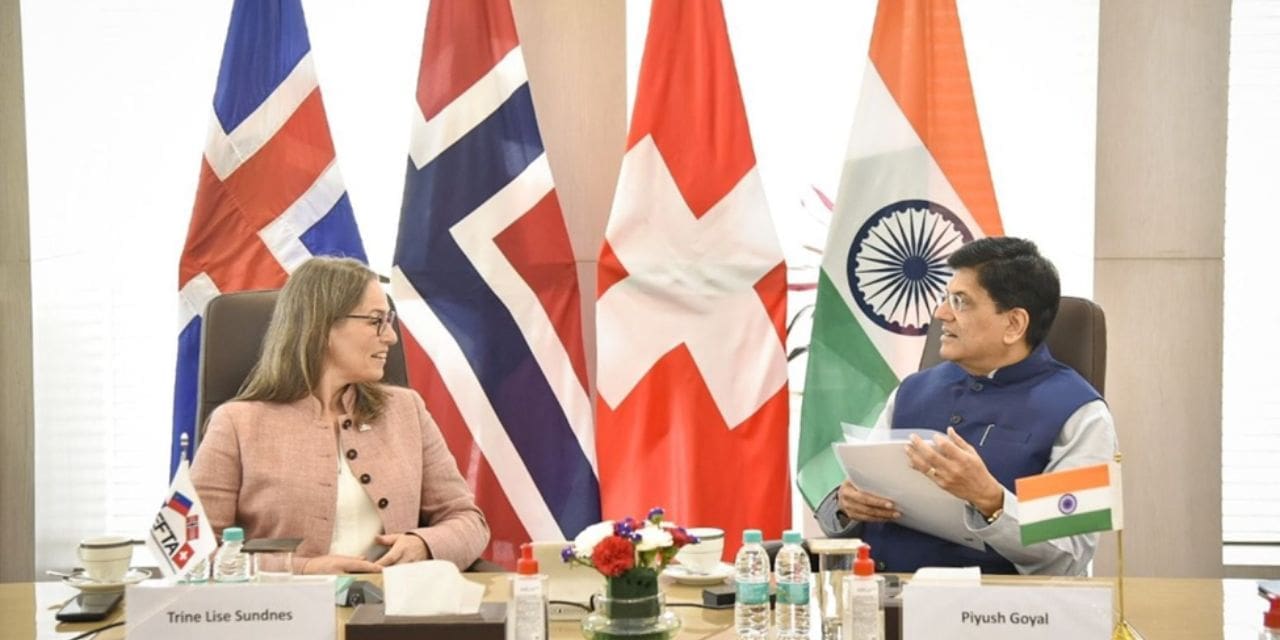Earlier this month, a momentous event took place as India and the European Free Trade Association (EFTA) – comprising Switzerland, Norway, Iceland, and Liechtenstein – sealed the Trade and Economic Partnership Agreement (TEPA), marking a significant milestone after 15 years of negotiations. This agreement represents a historic first for India on two fronts. Firstly, it stands as the country’s initial comprehensive trade deal with advanced economies. Secondly, India has made a noteworthy shift by including key areas such as intellectual property rights (IPR), and labour and environmental standards in the TEPA, previously non-negotiable in bilateral trade agreements.
The question arises whether India’s newfound flexibility in incorporating these critical areas in TEPA will pave the way for formalising bilateral agreements with other major economies like the European Union, Canada, Australia, and the United Kingdom. Notably, India’s pact with EFTA may not appear immediately advantageous due to the modest levels of trade and investment between the parties. In 2022, EFTA nations accounted for a mere 0.4% of India’s exports, while India’s share in EFTA’s exports stood at 3.7%. Switzerland notably dominated EFTA’s exports to India, with its major export being gold.
The primary focus now shifts to the potential impact of TEPA on escalating trade volumes and enhancing economic ties between India and EFTA. With organic chemicals and gems representing a significant portion of India’s exports to Switzerland, there lies an opportunity to diversify and expand trade flows further. TEPA’s inclusion of tariff cuts opens avenues for EFTA economies to broaden their export base, albeit with limitations, given Switzerland’s heavy reliance on gold and medicines as primary exports. Despite challenges, TEPA could facilitate growth in sectors like electronic goods and pharmaceuticals for India, while luxury items such as watches might witness increased demand in EFTA markets.
Moreover, Commerce Minister Piyush Goyal’s assertion of a binding commitment by EFTA countries to invest $100 billion in India has garnered attention. However, a detailed examination of the investment chapter in TEPA reveals a more nuanced approach, with EFTA states aiming to increase foreign direct investment gradually over the coming years rather than a definitive binding commitment. Given EFTA’s historically low investments in India, the cautious language in the agreement reflects prudent expectations for future investments and job creation.
One significant concession made by India in TEPA pertains to its patent regime, raising concerns over the potential dilution of key provisions safeguarding access to affordable medicines. Amendments in India’s Patents Act outlined in TEPA diminish the patent holders’ obligation to provide annual disclosures on patent utilisation in India, a move that has raised apprehensions about compromising public health interests. Such alterations in critical legislation for the sake of trade concessions bear the risk of undermining the original intent of the Patents Act and the broader healthcare ecosystem.
As India and EFTA embark on this new chapter of economic partnership, the outcomes of TEPA and the implications of its provisions will unfold in shaping the trajectory of their trade relations and bilateral investments. Balancing economic interests with societal welfare remains a crucial aspect as both sides navigate the complexities of this comprehensive trade agreement.

